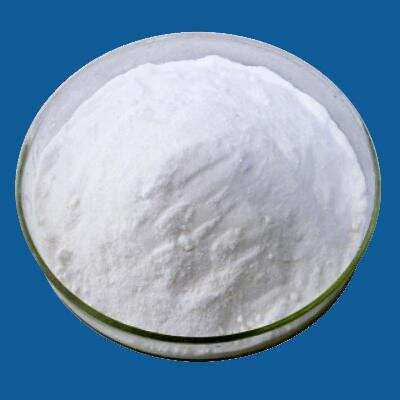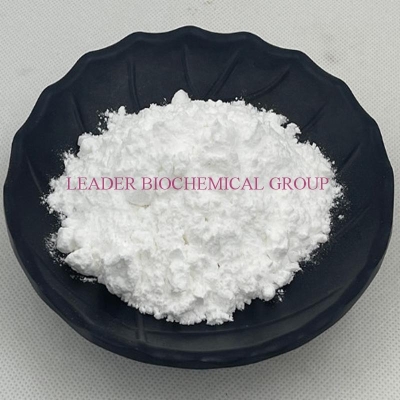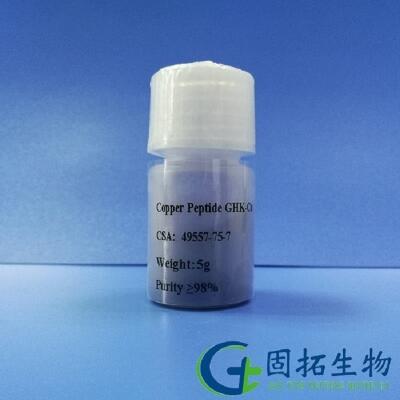-
The Upstream and Downstream products of Mt-2
Time of Update: 2023-04-29
The upstream products that are used as input to the Mt-2 unit can vary depending on the specific application and the desired output, and the downstream products that are generated by the unit can be used in a wide range of chemical processes.
-
The Instruction of O-Methyl-L-threonine
Time of Update: 2023-04-29
It has a variety of applications in the chemical industry, including as a reactant in the production of other chemicals, a catalyst in chemical reactions, and as a ligand in the study of protein-ligand interactions.
-
The Upstream and Downstream products of Alarelin Acetate
Time of Update: 2023-04-27
Conclusion In conclusion, understanding the upstream and downstream products of alarelin acetate is essential for optimizing the manufacturing process, ensuring product quality and consistency, and identifying new business opportunities.
-
The Instruction of L-Aspartic acid, calcium salt (2:1)
Time of Update: 2023-04-27
Safety Precautions L-Aspartic acid, calcium salt (2:1) is a hazardous chemical that can cause serious health risks if handled without proper care.
Safety Precautions L-Aspartic acid, calcium salt (2:1) is a hazardous chemical that can cause serious health risks if handled without proper care.
-
The Applications of Alarelin Acetate
Time of Update: 2023-04-27
In addition to its use in the chemical industry, alarelin acetate has also been studied for its potential health benefits.
In addition to its use in the chemical industry, alarelin acetate has also been studied for its potential health benefits.
-
The Synthetic Routes of Alarelin Acetate
Time of Update: 2023-04-27
There are several synthetic routes that are used to synthesize alarelin acetate, including the direct synthesis route, the condensation route, and the reduction route.
There are several synthetic routes that are used to synthesize alarelin acetate, including the direct synthesis route, the condensation route, and the reduction route.
-
The Upstream and Downstream products of L-Aspartic acid, calcium salt (2:1)
Time of Update: 2023-04-27
The production of L-Aspartic acid, calcium salt (2:1) involves a series of chemical reactions and purification steps, and the use of this compound as an intermediate chemical allows for the efficient production of a range of downstream products.
-
The Applications of L-Aspartic acid, calcium salt (2:1)
Time of Update: 2023-04-27
It is also used as a catalyst in the production of certain other types of drugs and pharmaceuticals.
It is also used as a catalyst in the production of certain other types of drugs and pharmaceuticals.
-
The Instruction of Alarelin Acetate
Time of Update: 2023-04-27
Its ability to stimulate the production of hormones in the body makes it a potential treatment for various medical conditions, and it is also being investigated as a research tool in the field of neurobiology.
-
The Safety of L-Aspartic acid, calcium salt (2:1)
Time of Update: 2023-04-27
Another concern with the use of L-Aspartic acid, calcium salt (2:1) is its potential to cause reproductive harm.
Another concern with the use of L-Aspartic acid, calcium salt (2:1) is its potential to cause reproductive harm.
-
The Safety of Alarelin Acetate
Time of Update: 2023-04-27
The safety of alarelin acetate has been extensively studied, and it is generally considered to be a safe and effective treatment for acid reflux and heartburn.
The safety of alarelin acetate has been extensively studied, and it is generally considered to be a safe and effective treatment for acid reflux and heartburn.
-
The Production Process of L-Aspartic acid, calcium salt (2:1)
Time of Update: 2023-04-27
The production of L-Aspartic acid, calcium salt (2:1) is a complex process that requires careful control and monitoring to ensure the quality of the final product.
The production of L-Aspartic acid, calcium salt (2:1) is a complex process that requires careful control and monitoring to ensure the quality of the final product.
-
The Production Process of Alarelin Acetate
Time of Update: 2023-04-27
The production process of Alarelin acetate, a synthetic peptide hormone, involves various steps that are carefully planned and executed to produce a high-quality product.
The production process of Alarelin acetate, a synthetic peptide hormone, involves various steps that are carefully planned and executed to produce a high-quality product.
-
The Synthetic Routes of L-Aspartic acid, calcium salt (2:1)
Time of Update: 2023-04-27
The synthetic L-Aspartic acid, calcium salt (2:1) is a widely used chemical compound in the chemical industry, with various applications in the production of drugs, food additives, and other chemical products.
-
The Production Process of Glycinamide hydrochloride
Time of Update: 2023-04-26
The production process of glycinamide hydrochloride involves several steps, including the synthesis of glycine, its hydrochlorination, and its purification.
The production process of glycinamide hydrochloride involves several steps, including the synthesis of glycine, its hydrochlorination, and its purification.
-
The Synthetic Routes of Glycinamide hydrochloride
Time of Update: 2023-04-26
Biochemical routes to glycinamide hydrochloride involve the use of microorganisms or enzymes to convert starting materials into the final product.
Biochemical routes to glycinamide hydrochloride involve the use of microorganisms or enzymes to convert starting materials into the final product.
-
The Safety of Glycinamide hydrochloride
Time of Update: 2023-04-26
In addition to wearing protective equipment, it is important to follow proper handling and storage procedures when working with glycinamide hydrochloride.
In addition to wearing protective equipment, it is important to follow proper handling and storage procedures when working with glycinamide hydrochloride.
-
The Instruction of Glycinamide hydrochloride
Time of Update: 2023-04-26
The production of glycinamide hydrochloride is an important part of the chemical industry and is used in a variety of applications, including the production of plastics, synthetic fibers, detergents, and pharmaceuticals.
-
The Applications of Glycinamide hydrochloride
Time of Update: 2023-04-26
It is used in the production of plastics and synthetic fibers, detergents and surfactants, pharmaceuticals, cosmetics and personal care products, agricultural chemicals, and other chemicals.
It is used in the production of plastics and synthetic fibers, detergents and surfactants, pharmaceuticals, cosmetics and personal care products, agricultural chemicals, and other chemicals.
-
The Upstream and Downstream products of Glycinamide hydrochloride
Time of Update: 2023-04-26
In the chemical industry, glycinamide hydrochloride is often referred to as an upstream product, which is a raw material or intermediate used in the production of downstream products.







